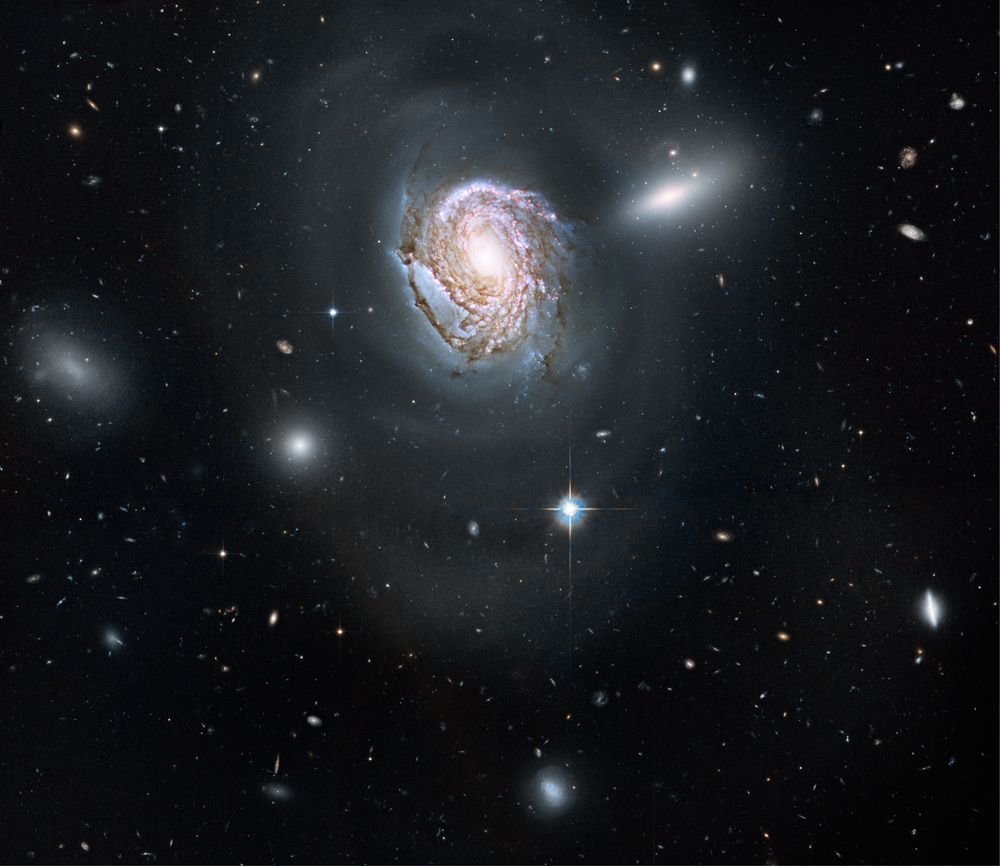[/caption]
The Coma Cluster is a huge, densely populated cluster, with thousands of galaxies closely bunched together. Amid the bedlam of ellipticals, lenticulars and irregulars is this majestic face-on spiral galaxy known as NGC 4911. Hubble stared long and deep to get this highly detailed image of this particular galaxy located deep within the Coma Cluster. Data from three different years and 28 hours of exposure time were combined to capture this breathtaking look at spiral arms, glowing newborn star clusters and iridescent pink clouds of hydrogen, meaning there is ongoing star formation.
The Coma Cluster lies 320 million light-years away in the northern constellation Coma Berenices. As usual for clusters like this, there are only a few young spirals galaxies, and Hubble magnificently captured one of them in all its glory, using long exposure times with the Wide Field Planetary Camera 2 and the Advanced Camera for Surveys.
Source: HubbleSite


I don’t think I’ve ever seen a spiral galaxy image like that one. Vast, extended spirals with no stars in them! I wonder if all spirals have these extended spirals but our images only ever capture the bright central regions? I also wonder, could this be the infamous dark matter?
This galaxy has survived as a spiral remarkably well in this billiard table of colliding galaxies.
LC
Absolutely stunning.
When I look at that image, I can’t help but to wonder how many intelligent beings there must be in the universe.
Messenger: I think these are stars.
Cute kitteh, and she looks well fed. [Yes, it’s cannibalistic, but who cares: it’s a sweet result!]
The undisturbed spiral pattern of NGC 4911 indicates that this galaxy is closer to us than the other elliptical galaxies on display on the picture.
What is new is the vast extend of the low luminosity spiral arms of that galaxy. None of the earlier pictures taken from that galaxy indicated their existence. However, the exposure time of 27 hours is unusually long, and this revealed the existence of these low luminosity arms.
I really wonder what we may see if we apply as long exposure times on other galaxies whose structure is currently thought to be known and well understood from existing, but incomplete pictures.
Galaxies – they grow on you.